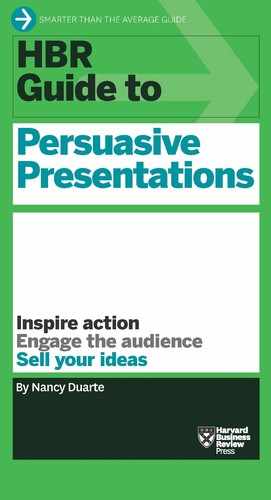Get the Most out of Your Q&A
A Q&A is a powerful, interactive way to address your audience’s concerns and drive your point home. Always allow time for Q&A in a business presentation—trim your talk if necessary. When people leave the room with burning, unanswered questions, they won’t adopt your ideas. Get the most out of your Q&A by:
- Planning when you’ll take questions: Establish early on if you want to field questions throughout your talk or save them until the end. If you need to build a thorough case, ask people at the very beginning to hold questions until the end. But if you’re making a series of points, you can take questions after each one, while they’re fresh in people’s minds.
- Anticipating questions: You can spend hours preparing a presentation and deliver it beautifully—and then undo all your hard work and undermine your credibility by fumbling a response to an un- expected question. Think through any questions the audience might raise, from the mundane to the hostile. (See “Anticipate Resistance” in the Message section.) Prepare answers ahead of time so you won’t be thrown off your game when all eyes are on you. Rehearse those answers, but still be mentally prepared for curveballs. Some questioners may feel a need to publicly challenge your idea. When that happens, it’s important to keep your composure. Knowing your material inside-out will help immensely.
- Listening empathetically for subtext: Answer questions directly, but also try to identify and address any deeper ones behind them. (You’ll often find a larger issue or unspoken motive lurking in the shadows.) Say you’re in HR and you’re hosting an orientation for employees from a recently acquired company. If people ask why they don’t get to have monthly employee birthday parties anymore, you may be tempted to brush that off as silly—but the parties are probably a symbol of a bigger underlying problem. The question behind the question might be: “The culture we used to have isn’t valued here. How can we hang on to some of the traditions that made our organization feel like a family?”
- Admitting when you don’t know something: Don’t fake an answer. Ever. Your audience will see right through it. If you don’t know the answer to a question, say that—and offer to do some research after the presentation and get back to the group.
- Keeping a tight rein on large or tough crowds: If you’re presenting to a large group, ask a Q&A moderator to graciously take the microphone back after each question is asked. That way, one aggressive question won’t turn into a barrage. Or, if you don’t have a moderator, let the audience know up front that you’re answering one question per person so more folks will have a chance to participate.
When I took delivery training classes, I learned to acknowledge questions from angry inquisitors—but to look at other audience members when answering them so it’s easier to move on to the next person and keep the discussion constructive. If your topic is emotionally charged or you’re addressing a crisis—a safety recall, for example—have a facilitator filter the questions. He can compile a mix of tough questions and lighter ones that might get a laugh, and omit those that stray off topic or seem to have a personal agenda behind them. He can also plant questions the audience might be too intimidated to ask—for instance, “Will people lose their jobs if we don’t make our numbers this year?”
- Leaving a strong final impression: Don’t end abruptly after the Q&A—it feels incomplete and unsatisfying to the audience, and you’ll miss an opportunity to reinforce your message. Wrap up the discussion with a brief summary that recaps the “new bliss” you’re helping the audience achieve. (See “Make the Ending Powerful” in the Story section.)
